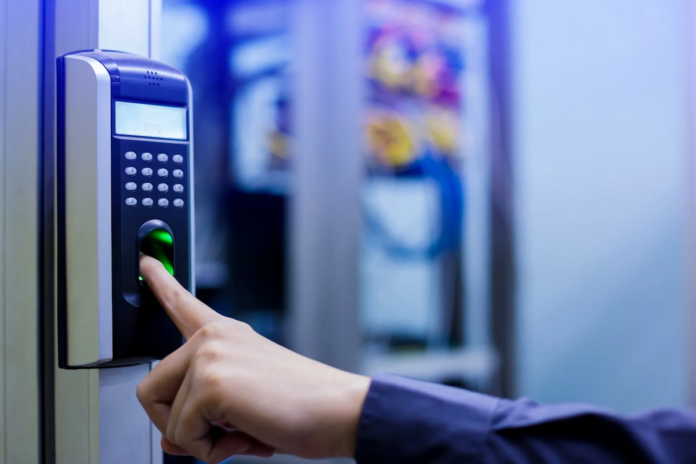Access control systems are pivotal in modern workplaces, offering an integrated approach to security, efficiency, and operational management. Access control system installation provides selective access to designated areas, ensuring only authorised personnel enter specific zones while keeping unauthorised individuals out. By replacing traditional lock-and-key methods with technological solutions, access control systems not only bolster security but also streamline administrative tasks. They enable businesses to monitor and manage access, integrate with various systems, and generate detailed reports for better oversight. With their capacity to enhance security, manage time and attendance, and offer remote control, access control systems are fundamental in optimising workplace efficiency and safety.
Simplified Management and Enhanced Control:
Access control systems offer simplified management and enhanced control within workplaces. By centralising access permissions, administrators can easily assign and adjust individual rights, reducing the need for physical keys and the associated administrative overhead. This centralised approach allows for quick modifications to access levels, ensuring efficient and timely adjustments as needed. Detailed logs and reports provide insights into access patterns, aiding in better control and decision-making. Such streamlined management not only fortifies security measures but also optimises operational efficiency by allowing seamless and immediate control over who can access specific areas, promoting a more productive and secure work environment.
Save Money and Energy:
Access control systems also contribute to saving money and energy within a workplace. By efficiently managing access to various areas, these systems help conserve energy by regulating lighting, heating, and cooling based on occupancy. Unauthorised access to certain zones is prevented, reducing unnecessary energy consumption. Additionally, the automated tracking of employee attendance and working hours facilitates accurate billing and payroll, minimising financial losses due to errors or time theft. This streamlined process not only saves money but also enhances resource allocation and cost-efficiency within the organisation, ultimately contributing to a more sustainable and financially prudent operational environment.
Flexible Access Time:
Flexible access times within an access control system offer employees the convenience to enter the workplace based on their schedules. This adaptable approach allows for varied entry and exit times, accommodating different working hours or shift patterns. Such flexibility fosters a better work-life balance for employees and can enhance productivity by empowering individuals to work during their most productive hours. Moreover, it can support businesses with diverse operational needs, enabling 24/7 operations or accommodating remote or flexible work arrangements. Flexible access times within these systems promote efficiency and adaptability, catering to the dynamic demands of modern workplaces.
Eliminating Traditional Keys:
Implementing access control systems eradicates the reliance on traditional keys within workplaces. These systems replace physical keys with electronic credentials, key cards, or biometric identifiers, streamlining access and enhancing security. By eliminating the need for physical keys, organisations reduce the risks associated with lost or stolen keys, the inconvenience of rekeying locks, and the complexities of managing a large number of keys. This shift not only boosts security but also simplifies access management, offering a more efficient and flexible way to control entry to various areas within a facility.
Streamlined Entry and Exit Processes:
Access control systems streamline entry and exit processes by automating access to specific areas within a workplace. Through keycards, biometric scans, or other authentication methods, these systems swiftly validate and authorize entry for authorized personnel, eliminating the need for traditional keys. This expedites access, reducing waiting times and bottlenecks at entry points. Moreover, such streamlined processes enhance security by ensuring only authorized individuals can enter while also creating a more efficient flow of movement in and out of the workplace, ultimately contributing to improved overall productivity. For enhanced security measures, one can shop for custom PVC cards online, tailored to specific organizational needs and security protocols. These cards not only serve as identification but also streamline the entry process, further reinforcing the efficiency and effectiveness of the system.
Protect Against Unwanted Visitors:
Access control systems serve as a robust deterrent against unwanted visitors by fortifying physical security measures. These systems meticulously manage and monitor access to designated areas within a workplace, ensuring that only authorized individuals can enter. Through the use of keycards, biometric scanners, or access codes, they prevent unauthorized entry, safeguarding against intruders, trespassers, or individuals without clearance. By implementing strict entry protocols, access control systems play a pivotal role in fortifying the premises. Mitigating the risk of theft, protecting sensitive information, and maintaining a safe environment for employees. Ultimately bolstering overall security measures within the workplace.
Access control systems are a cornerstone of workplace efficiency, enhancing security. Streamlining access management, and offering valuable insights through detailed monitoring and reporting. Their integration with other systems and remote management capabilities bolster overall operational efficiency. Reducing administrative burdens and allowing for quick response in emergencies. Ultimately, these systems ensure a secure, flexible, and productive work environment.



